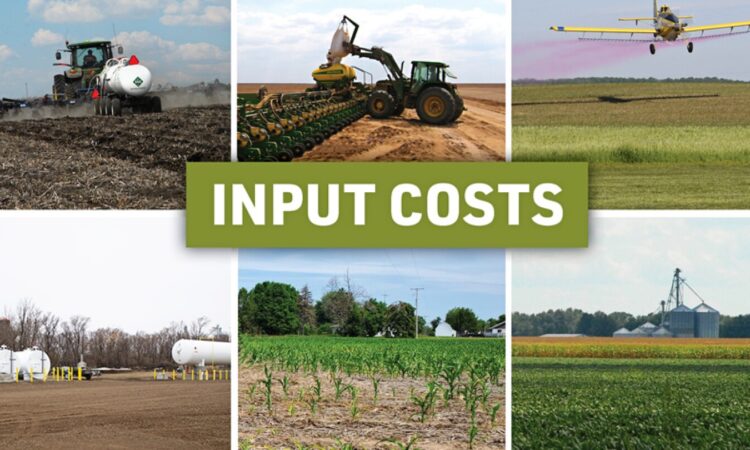
Testimony from farmers, economists and legislators during a Senate Judiciary Committee meeting Tuesday painted a stark picture of the challenges row crop growers are up against to stay in business as input prices continue to climb and profit margins are severely squeezed.
The hearing exposed a critical challenge for U.S. production agriculture: as a handful of corporations controls more of the agricultural supply chain for seed and fertilizer, farmers say they are left with fewer choices, higher costs and diminishing control over their own operations.
Noah Coppess, a fifth-generation farmer based in Cedar County, Iowa, shared his personal observations on the industry’s transformation over the past few decades.
“The reality in farming today is we’re price takers rather than price makers,” he said, highlighting how farmers have lost bargaining power as agricultural manufacturers and suppliers have become increasingly concentrated.
“It’s further complicated by lack of price transparency, with farmers forced to operate at the liberty of the market at the front and back end,” Coppess added. “I have concerns with our input and equipment supply chains and their ability to manipulate our costs.”
‘The Cost Of Fertilizer Is Crushing Growers’
Coppess also told the committee how farmers are routinely asked to prepay for fertilizer three to six months prior to a needed application, and up to 14 months before their crop will be harvested.
“Many of the contracts are written with a narrow window to get the products applied, or the contract expires and the input is repriced at a higher value, or monthly fees can be applied to extend the contract,” he said.
Coppess noted that phosphate has become “a bare minimum usage fertilizer” on his farm due to the rising cost. “We have invested significant capital and time trying to find other ways to manage our phosphorus needs, as the cost of this input is at a point of negative return,” he said.
Mark Mueller, an Iowa farmer and president of the Iowa Corn Growers Association, gave written testimony for the committee, saying the massive increase in the cost of fertilizer is “crushing corn growers” in Iowa and other states.
“Growers across the country are facing an impossible decision: buy fertilizer or stay solvent. This is not sustainable, and it is well past time to stop ignoring the role of the fertilizer monopolies that dominate critical input markets,” Mueller said. “Right now, the price of our most essential input, fertilizer, is squeezing the life out of the American farmer like a vise. We must take action and return competition to our ag economy.”
Mueller discussed his report to the judiciary committee in more detail during a conversation on AgriTalk on Wednesday, which is available here:
Testimony from Diana Moss, vice president and director of competition policy at the Progressive Policy Institute, highlighted how the seed and fertilizer industries are dominated by only a handful of companies. She referenced a USDA study that shows two seed companies accounted for 72% of planted corn acres and 66% of planted soybean acres. In addition, Moss said the fertilizer industry is equally consolidated, with four firms controlling 77% of nitrogen production and 100% of potash and phosphate markets.
John Latham, president of Latham Hi-Tech Seeds, an independent seed company based in Alexander, Iowa, weighed in with his perspective on consolidation within the seed industry.
“Independent seed companies can offer products better suited for specific geographies than the multinationals. Unfortunately, many independent companies are going out of business as these multinational companies have become more powerful and, frankly, predatory,” Latham said, noting that the seed corn industry is 90% controlled by two companies.
Seed Costs Have Soared
Moss noted that the average price farmers paid for seed rose by 270% between 1990-2020.
“For crops planted predominately with GM seed, such as corn, soybeans, and cotton, seed prices rose by an average of 463%,” she said. “These price increases compared with commodity price inflation of 56% over the same period.”
Moss also warned that farmers also have little price transparency due to the practice of rolling seed technology prices into the total price of GM crop seed, making it harder to compare seed costs over time. “Farmers also see lower quality as previous generations of technology begin to lose their effectiveness,” she added.
Latham noted that seed prices aren’t just increasing for the newest and latest seed technology, but also on older technologies that are going off patent, or soon to be off patent. One example Latham gave is NK603, a glyphosate-resistant corn product, which went off patent in 2022.
“Farmers are being charged the highest royalties ever for this off-patent technology. More than 90% of biotech-traited corn in the United States is glyphosate resistant, so farmers are paying billions of dollars for seed royalties on a trait that has been off patent for three years,” Latham said.
Along with that, seed royalties have increased significantly. Latham said about 70% of the cost of a bag of seed goes to royalties now, compared to 42% just five years ago.
Farmers Ask For Workable Solutions
Senators from both parties expressed concern during the committee hearing, suggesting potential legislative solutions including improved transparency, antitrust enforcement, and support for independent agricultural research.
Caleb Ragland, a Kentucky farmer and president of the American Soybean Association, said Congress and the Trump administration need to take immediate action to reduce farm production costs and prevent additional family farm closures. He outlined three urgent policy priorities to improve economic conditions for U.S. soybean farmers:
1. Provide tariff relief on critical agricultural inputs such as fertilizer, seed, pesticides, machinery, and parts.
2. Finalize biofuel policy, including RFS volume obligations and 45Z Clean Fuel Production Credit guidance, to expand domestic markets for soy.
3. Deliver targeted farmer assistance to help producers manage severe market losses and negative basis impacts.
The complete committee meeting – Pressure Cooker: Competition Issues in the Seed & Fertilizer Industries – is available on YouTube.
Your next read: ‘The System Is Failing Us:’ Why Real Change is Needed in U.S. Agriculture



